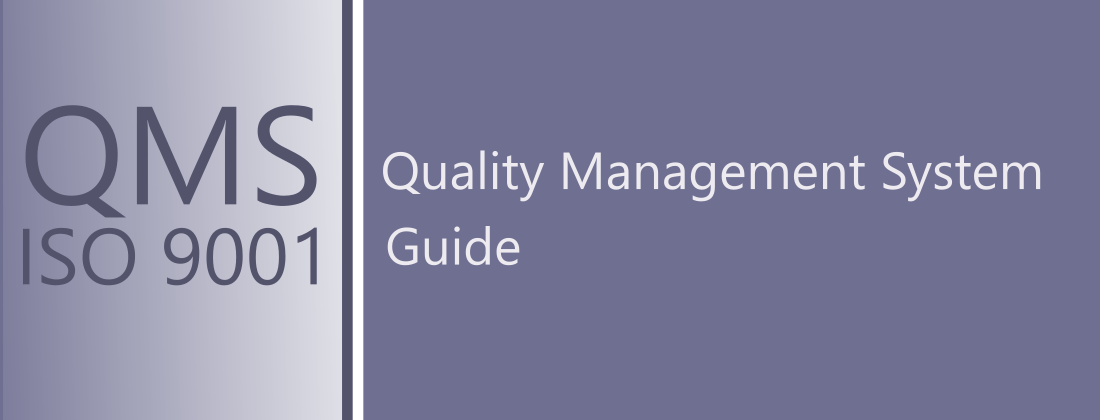Along with the emergence of the theory of organization management methods, the beginnings of knowledge about quality management also appeared. The precursor of modern knowledge on this subject was Walter Andrew Shewhart (1891-1967). His permanent contribution to this area of managerial knowledge are primarily control cards, as well as corrective action algorithms, later referred to as Shewhart’s cycle . These are now standard quality control tools. The first practical application of these tools took place on May 16, 1924, in the United States. The event was later considered so important that it was proposed to declare May 16 as World Quality Day.
Shewhart’s proposal was a response to the threats resulting from the growing distance between human production and control capabilities. Efficient and constantly improved technical devices allowed for a very fast increase in the volume of production, while human capabilities in the scope of controlling and assessing the quality of manufactured products remained at the level of artisanal production. This posed a very significant threat to the quality of mass-produced products. Shewhart noticed this threat and offered to equip production systems with subsystems of ongoing quality control. It created real possibilities of controlling industrial processes of creating quality. It should be added here that, according to Shewhart’s views, which are still unchallenged, quality control in the sphere of production consists in detecting and removing successive non-random factors disturbing the course of the technological process. This leads to the limitation of variability of the controlled properties of the product, and consequently to the improvement of its quality. In original works. Shewhart, and especially in his basic work “Economic control of quality of manufactured product”, these causes are referred to as determinable causes. Control charts are used to detect symptoms that indicate these non-random confounders. The signal emitted by the control card starts the Shewhart cycle , which is a series of coordinated actions aimed at identifying and then eliminating the factor disturbing the course of the monitored process.
Shewhart’s proposals were initially reluctant. Their wide application became a reality during the Second World War, in the period of increased production effort of the American industry.
The post-war five years ended the first stage of development of the concept and methods of quality management, initiated by Shewhart in 1924. It was the stage in which the production orientation of enterprises was dominant and the activities in the field of quality management were subordinated to this orientation. In practice, it was manifested in the improvement of internal feedback loops in production systems, and thus, first of all, the subsystems of receiving, current and final quality control were improved. However, little attention was paid to the analysis of information coming from the market. It had its rationale. During the war, and then in the first period of reconstruction of war damage, the needs of the basic mass of consumers were very clearly unified, and the general shortage of various kinds of goods did not pose any problems with the sale of production.
W. Edward Deming (1900-1993) was the first American specialist to methodically impart quality knowledge to Japanese managers. It is considered to be the forerunner of a new approach to quality management. He was Shewhart’s associate from 1927. During the Second World War, he dealt with the problems of statistical quality control, cooperating with the US Ministry of War. After the end of the war in 1946, he was appointed professor of statistics at the Graduate School of Business Administration at New York University, where he remained until his death. In 1947 he went to Japan, where as a statistician he was to help the occupation authorities of General MacArthur with the census. He was then the chief mathematician and advisor on statistical trials in the US Census Bureau. He taught the Bureau staff about statistical sampling and control, and during the 1940 census, he was able to achieve astonishing gains in productivity and lower the cost of statistical work. Later, after the Second World War, he conducted quality courses for Japanese engineers. Due to the fact that the implementation of quality management systems is successful only when the managers are convinced of it, Deming insisted that the directors should be treated as a separate, key group. His early presentations in 1950 were prepared on the basis of advanced statistical quality control techniques. He then managed to reach over a hundred people in charge of Japanese industry, and the following year – to another 400. His courses were attended by directors and engineers of companies whose names were to become the showpiece of Japan for the Western world.
“Contrary to what many people in the West believe, Dr. Deming did not teach the Japanese statistical methods of quality control. These concepts and their meaning were well known to the Japanese long before Deming’s arrival. However, the Japanese found it difficult to introduce mathematical concepts to a wider group of people < strong> (..). Deming’s part was that he helped them break through the theory layer and presented these principles in a simple way that even ordinary workers could understand. ” As a result of his work to introduce quality management and disseminate the method of statistical quality control, Deming was recognized as a national hero of Japan. Since 1965, the most prestigious quality award in Japan has been awarded, i.e. the Deming Award .
It was discovered in the United States relatively late, only in the 1980s, when NBC broadcast the documentary program “If Japan Can, Why Can’t We?”, in which Deming was described as “the father of the third wave of the industrial revolution.” Since then, the fashion for “Japanese” quality systems has begun in the United States, and later all over the world, and continues to this day. Deming is considered to be the founder of the TQM philosophy , the principles of which he laid down in fourteen theses, today called Deming’s theses . There is no single version of theses. Deming never wrote them down, each time he called them differently, although their order did not change. In this way, he wanted to avoid what he himself criticized so fiercely, i.e. to make meaningless slogans out of them that would be hung on the walls.
autor: Mariusz Mazur






